Learning how to make dried beans can feel intimidating at first. No worries! We'll show you how to cook beans on the stove, in the slow cooker, and the Instant Pot. You'll be whipping up recipes like Cuban black beans with ease.
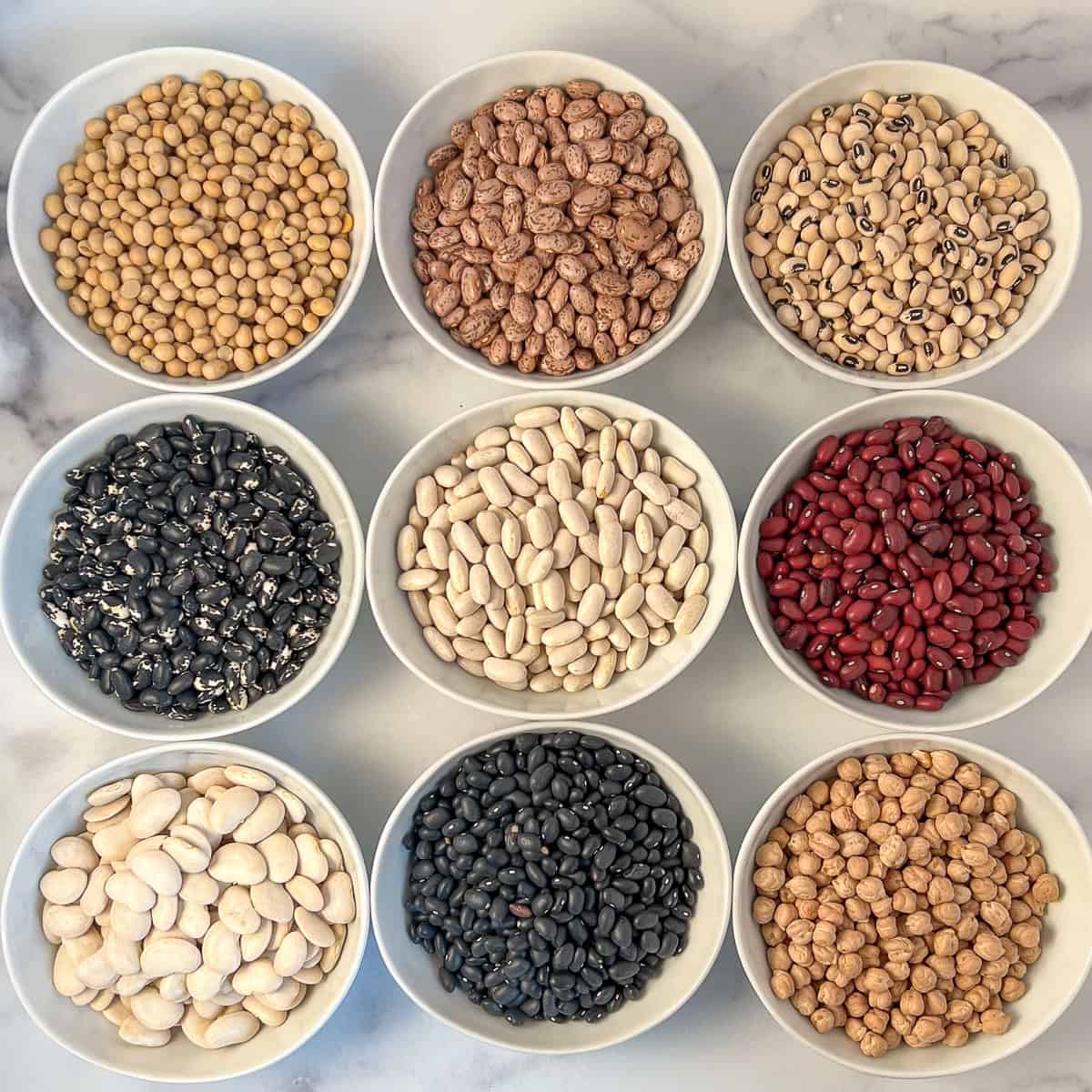
What Are The Benefits of Dried Beans?
Cooking dried beans is a great way to lower your food cost (check out our round up of budget vegan meals), and avoid excessive sodium and preservatives found in canned beans. Plus, dried beans offer better flavor, texture, and more control over seasoning. Once you master the cooking process, you’ll never look back.
Curried butter beans and red kidney bean soup are best when you make them with dried beans. You get a better texture and flavor.
Choosing Your Beans
There are many varieties of beans—black beans, garbanzo beans (chickpeas), pinto beans, cannellini beans, black-eyed peas, butter beans (large lima beans), great northern beans, kidney beans, and more. There are also heirloom beans, like Rancho Gordo. Heirloom beans are beans that can be harder to grow and don’t yield as much, but the amazing flavors and textures you get are totally worth it.
The age of your beans affects cooking time. Fresh beans cook faster than old beans that have been sitting on a pantry shelf for a year.
The size and shape of your beans also affects cooking time. Chickpeas and butter beans take longer to cook than black eyed peas and small red beans.
If you're not sure when your beans were harvested, look for a harvest date or choose beans from trusted sources. The shelf life of dried beans is long, but older beans require longer cooking times and may be difficult to soften.
Measure, Sort, and Rinse Dried Beans
All three cooking methods (stovetop, slow cooker, and Instant Pot) require measuring the amount of dried beans you want to cook. A general guide is a 1:3 ratio, where one cup of dried beans will yield about three cups of cooked beans.
After measuring, do a quick sort of the beans to remove small stones or other debris you don’t want to eat. Just dump the dry beans in a pie pan or on a rimmed cookie sheet and browse through them with your fingers.
Finally, rinse the beans in a strainer under cool water.
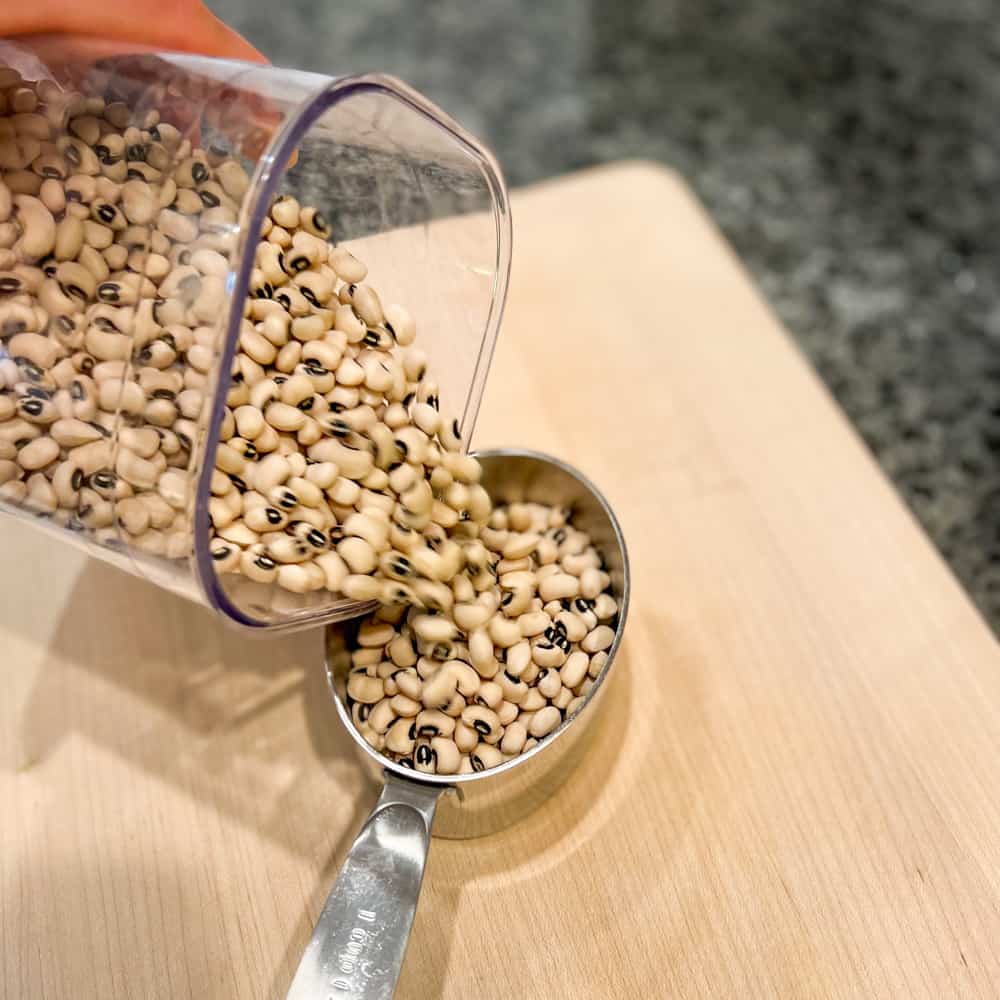
Step 1: Measure the amount of dried beans you want to cook.
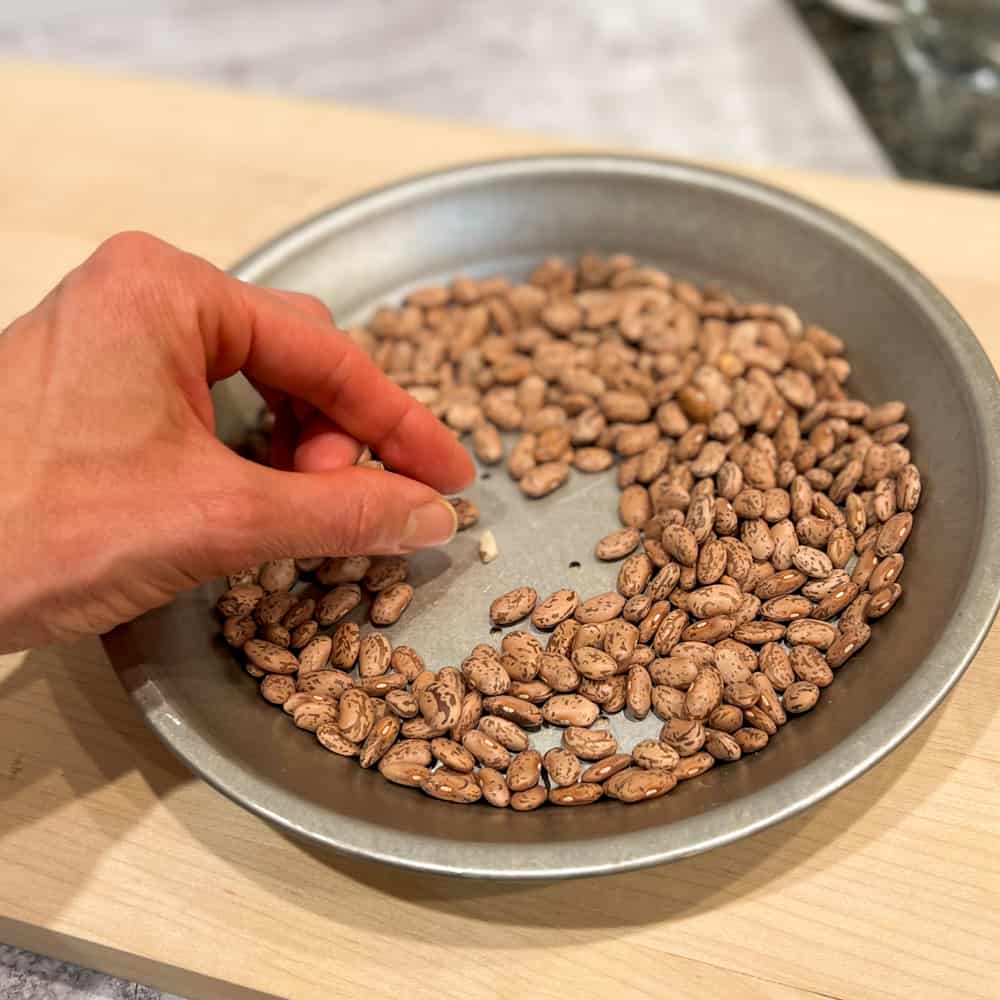
Step 2: Sort the beans to remove small pebbles or other debris.

Step 3: Rinse the beans under cool water.
Now, proceed to the method you plan to use to cook your beans.
How to Cook Dried Beans on the Stove
Soak the Beans
Soaking beans isn’t mandatory, but it makes a huge difference in cook time, and can help with digestion. Soaking also helps the beans cook more evenly. You can do this in one of two ways.
- Overnight (8-Hour) Soak: Put the beans into a bowl and cover them with water by at least 2 inches, letting them sit overnight or for 8 hours.
- “Quick” (1-Hour) Soak: To do a faster soak, place the beans into a pot. Add enough water to cover the beans with about 2 inches of water. Bring the beans to a gentle boil. Turn off the heat and let it sit for 1 hour.
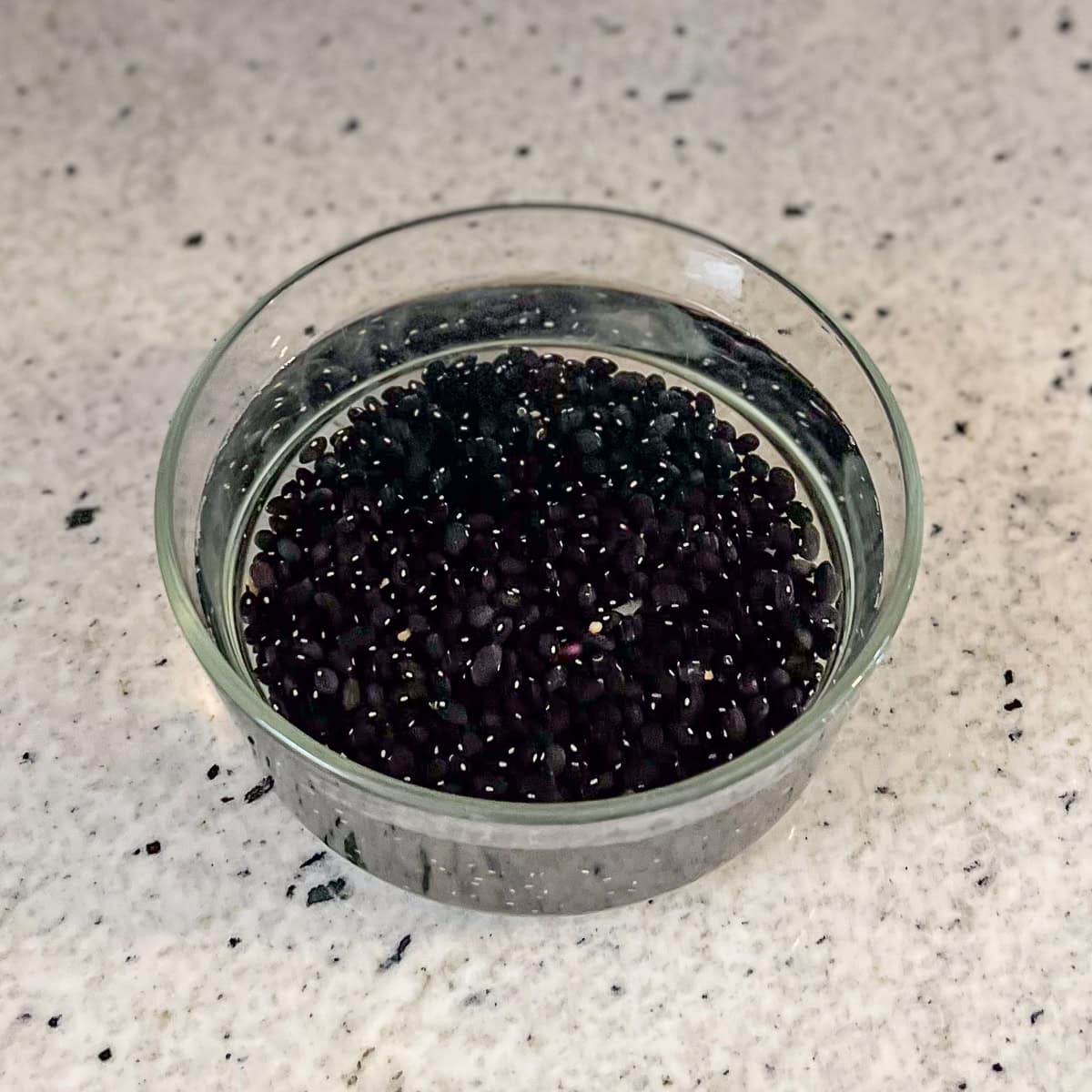
You’ll know the beans are soaked by the amount of water absorbed from soaking. Your beans will increase in size, and the water level will appear to decrease. But what's happening is that the water transfers into the beans, plumping them up.
When the beans are done soaking, drain away the soaking water and rinse them.
Now it’s time to fire up the stovetop.
Cook the Beans
Put the soaked, rinsed, and drained beans into a large pot or dutch oven with enough water to cover the beans with 2 to 3 inches of water. Aim for 3 inches if cooking chickpeas or larger beans that require more cooking time.
Turn the heat up to medium-high to bring to a gentle boil, then partially cover with a lid and reduce heat to low or simmer.


How Long to Cook Beans
Beans typically take between 10 minutes and 2 hours to cook on the stovetop, depending on the bean’s type, size, and shape. As you can imagine, tiny beans like mung beans will take less time, whereas larger (round) beans like chickpeas typically take more to cook through. Below are estimated cooking times of common beans:
| Dried Bean Type | Estimated Stovetop Cooking Time (in minutes) |
| Mung beans, French lentils, red lentils, small brown lentils | 10 to 15 |
| Adzuki beans, split peas, brown/green lentils, small red beans | 30 to 40 |
| Black-eyed peas, purple hulled peas | 40 to 45 |
| Black beans, pinto beans, kidney beans, cannellini beans, navy beans, cranberry beans, small lima beans | 45 to 60 |
| Chickpeas (garbanzo beans), butter beans (large lima beans) | 60 to 75 |
Periodically stir the beans and make sure they are cooking to the desired consistency. Stoves can vary, so a "low" or "simmer" on my stove may differ from your stove. Also, longer-cooking beans will lose more water through evaporation, so check in on them and add more boiling water, if necessary.
Also, if you cook them too long, they’ll lose their shape and turn into mush. If you’re making refried beans, a blended soup, hummus, or veggie burgers, it’s probably not a big deal since you’re going to smash them anyway. But if you’re making the beans for a vegan chickpea salad, black bean buddha bowl, or veggie chili, you’ll be disappointed. So check them frequently.
When the beans are done cooking, drain any excess water and use them for whatever! Check out these bean recipes.
Delicious Bean Recipes
How to Cook Beans in a Slow Cooker
For hands-off cooking, the slow cooker is your best bet. After you’ve measured, sorted, rinsed, and strained the beans, you can add them to a slow cooker with water. There’s no need to soak the beans beforehand. You can put the beans on in the early morning, and they’ll be ready for dinner later that evening.
For every one cup of dried beans, you'll need to add 3.5 to 4 cups of water. For most dried beans, like black beans, pinto beans, and black-eyed peas, you'll need 3.5 cups of water per cup of beans. For chickpeas and larger butter beans, you'll need 4 cups of water per cup of beans.
In the slow cooker, beans can take anywhere from 4 hours to 8+ hours, depending on the bean’s type, size, shape, and whether you’re cooking at high or low heat. As with stovetop cooking, smaller beans cook faster than larger beans. Of course, beans cooked at a high heat setting will be done sooner than at low heat. But if you’re away from the house all day, a low temperature and longer cook time are actually more convenient, right?
Cooking Times in a Slow Cooker
While slow cooker temperatures may vary between brands and equipment performance, high heat settings typically cook twice as fast as low heat settings. I prefer the low heat setting because you can set it and forget it, going about your day without worrying whether it’s going to burn. When I’ve left my beans in too long on “low”, the worst that’s happened is that some of them start to split. Below are the estimated cooking times by dried bean type:
| Dried Bean Type | Slow Cooker High Heat Estimated Cooking Time (in hours) | Slow Cooker Low Heat Estimated Cooking Time (in hours) |
| Mung beans, French lentils, red lentils, small brown lentils | 1 to 2 | 2 to 4 |
| Adzuki beans, split peas, brown/green lentils, small red beans | 2.5 to 3 | 5 to 6 |
| Black-eyed peas, purple hulled peas | 3 to 3.5 | 6 to 7 |
| Black beans, pinto beans, kidney beans, cannellini beans, navy beans, cranberry beans, small lima beans | 3.5 to 4 | 7 to 8 |
| Chickpeas (garbanzo beans), butter beans (large lima beans) | 4 to 5 | 9 to 10 |
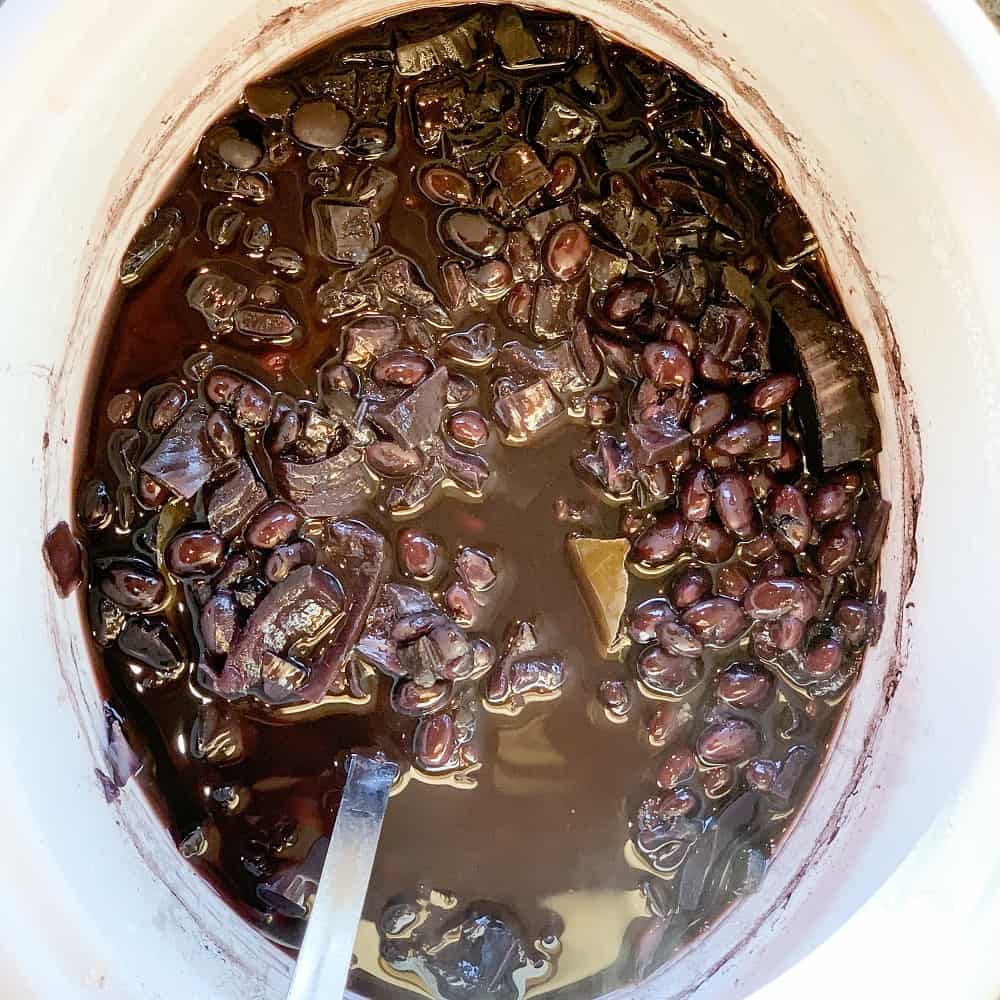
How to Cook Beans in the Instant Pot
The Instant Pot is one appliance I’m so glad I discovered. I purchased mine in 2015, about three years after I adopted a whole food, plant-based vegan diet. This little powerhouse of a kitchen appliance can do several things, including sauté, steam, slow-cook, and of course, pressure-cook your favorite foods. In addition to cooking beans in the Instant Pot, you can also make soups, porridge, rice, sweet potatoes, and even cake!
With the Instant Pot, you don’t need to soak beans. Yay!
The ratio of dried beans to water is similar to the slow cooker method, typically 1 to 3½ (or 4). That means one cup of dried beans to 3½ (or 4) cups of water. One cup of most dried beans (like black beans, pinto, and black-eyed peas) will need 3½ cups of water, whereas chickpeas will need 4 cups of water.

Instant Pot Cooking Times
After adding the dried beans and water to the Instant Pot, you’ll need to lock the lid and set the pressure release valve to the sealing position. This enables the Instant Pot to come to pressure when you turn it on. In many cases, it takes around 10 to 12 minutes for the Instant Pot to come to pressure and start cooking.
SAVE THIS RECIPE!
We'll also send you other yummy recipes. No worries! You can unsubscribe at any time. 💙

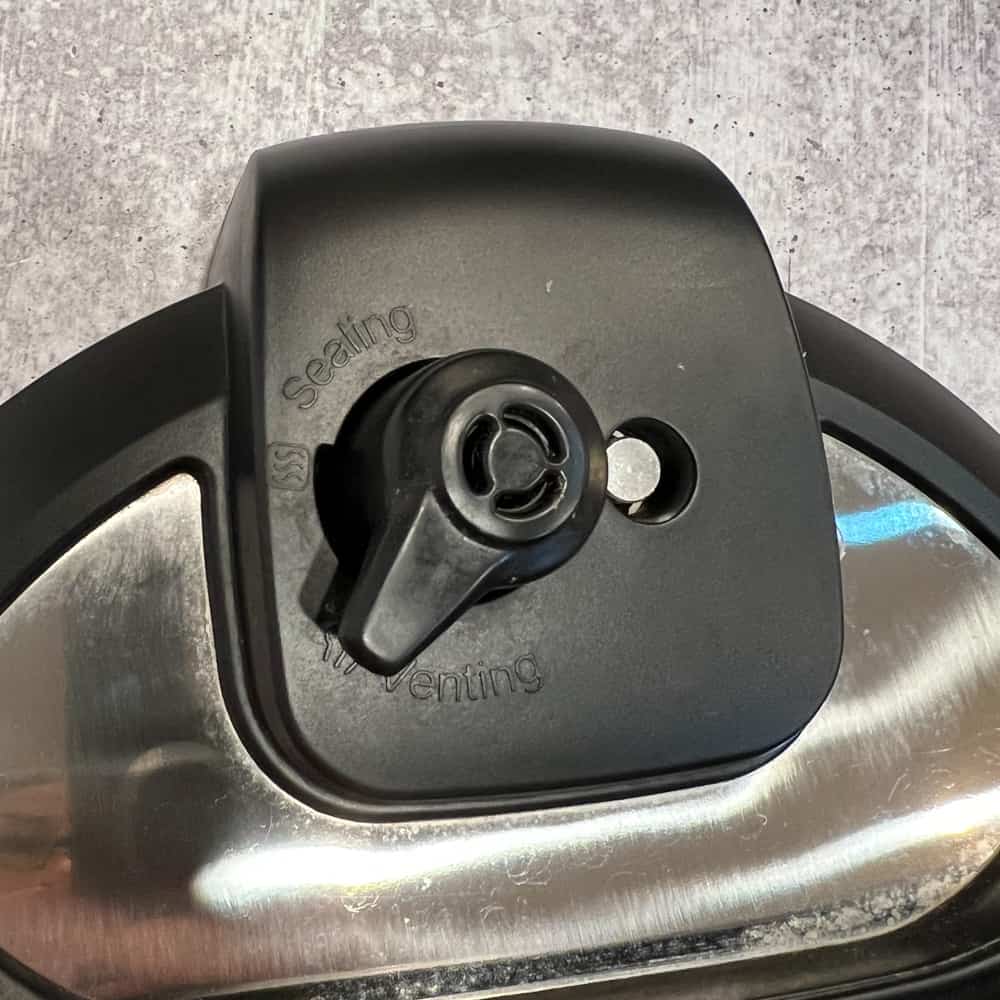
Let’s pause and go through how the pressure release works at the end of cooking beans in the Instant Pot. There are three types of pressure release methods: natural, quick, and a combination of the two.
Natural pressure release
A natural pressure release is when the beans are done cooking and the Instant Pot gradually releases the pressure. It can take about a half-hour to finish releasing. When it’s done, you’ll be able to unlock and remove the lid. Using the natural pressure release will continue to cook the beans and come to a slow stop.
Quick pressure release
Quick pressure release is when you carefully switch the valve from the sealing position to release. You’ll want to do this from the side so the steam coming out doesn’t burn your hand. Quick-release can help rapidly stop the pressure cooking process with delicate smaller beans like mung beans to avoid mushy beans.
Combination of natural and quick
A combination of both natural- and quick-pressure release has worked well for me when cooking most beans like black-eyed peas, pinto beans, and black beans. After the program ends, you allow 10 to 15 minutes of natural release and then finish it off with a quick release.
Tap the Bean setting on the Instant Pot and adjust the time according to the type of bean you’re cooking.
| Dried Bean Type | Set Timer to (in minutes) | Natural Release Time (in minutes) | Quick Release |
|---|---|---|---|
| Mung bean | 1 | None | Yes, immediately |
| Adzuki beans | 12 | 10 | Yes, after natural release |
| Black-eyed peas, purple hulled peas | 15 | 15 | Yes, after natural release |
| Black beans, pinto beans, kidney beans, cannellini beans, navy beans, cranberry beans, fava beans, lima beans | 30 | 30 | Yes, after natural release |
| Chickpeas (garbanzo beans) | 50 | 30 | Yes, after natural release |
Frequently Asked Questions
Beans are food that contains both complex carbohydrates as well as protein. They are often mentioned as a good source of protein, but they have both.
If you're new to eating a whole food, plant-based nutrition plan, having gas is pretty standard. However, the longer you eat these foods, including beans, the frequency of flatulence will likely lessen. Your body (i.e., the microbes in your gut) will adjust to this new way of eating. Be sure to chew your food well and eat slower. Also, tossing the cooking water you used to make the beans can help. Finally, consider adding a strip of kombu to the beans while cooking. Be sure to remove it before serving your beans. Kombu is high in iodine, so if you have thyroid issues, please be sure to check with your healthcare provider before adding it to your beans.
Beans are very nutritious. Eating a diet rich in beans (and other legumes like lentils and peas) have been shown to promote weight loss, improve heart health, insulin sensitivity and gut health. Nutritionally, beans are high in fiber, antioxidants, and a good or excellent source of iron, potassium, magnesium, folate, and other B-vitamins.
Absolutely! As a nutritionist and athlete, I typically eat 4 servings of beans or other legumes (like lentils and peas) daily. But other nutrition experts recommend 3 servings daily. A serving is ½ cup of cooked beans (or other legumes). It's also good to have variety so be sure to mix things up!
Conclusion
Beans are nutritious and found to be a staple in the longest-lived populations, often referred to as “Blue Zones.” They are packed with fiber, protein, several micronutrients, and beneficial compounds. While I appreciate the convenience of canned beans (don’t get me wrong, I use those too!), dried beans hold a special place in our hearts. They are budget-friendly and generate less recycling and garbage waste than canned beans. Plus, there’s no added sodium with dried beans.
I hope this how-to guide is helpful. The more you cook with dried beans, the more it becomes second nature. Your feedback is important to us. Please leave a reply below and share.


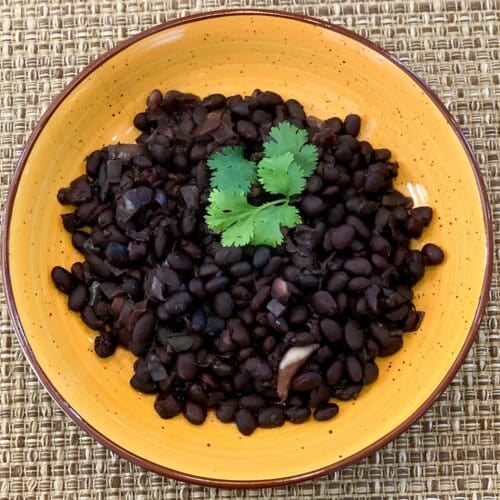
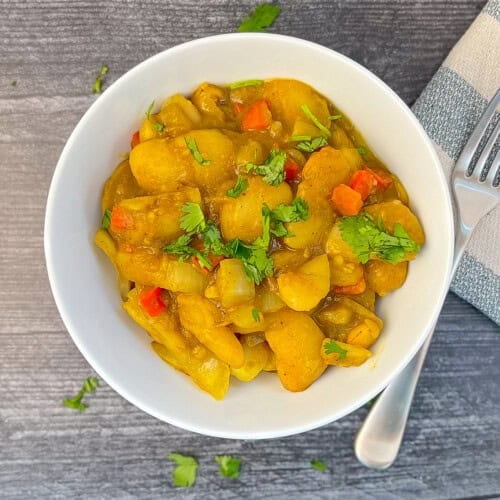

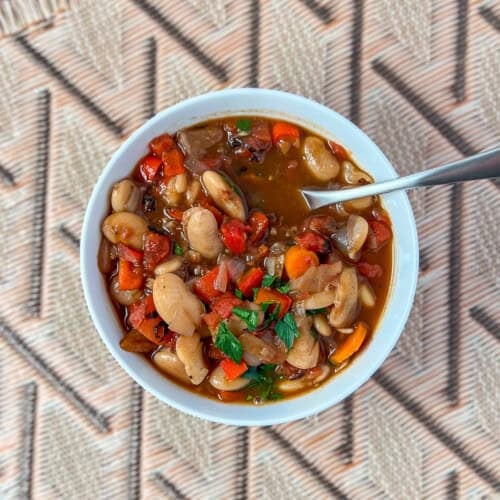
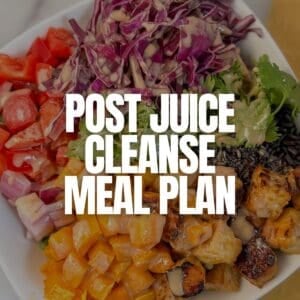
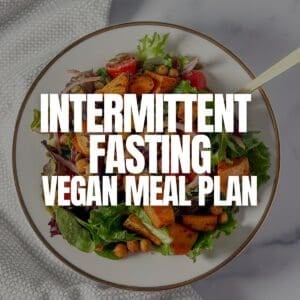
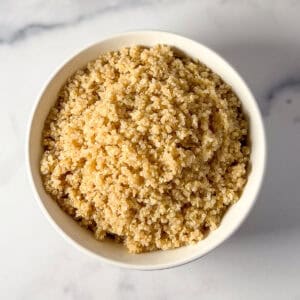
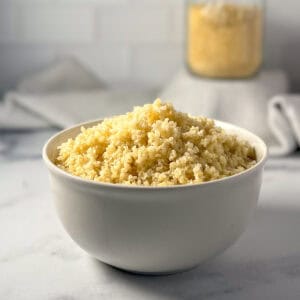
Leave a Reply